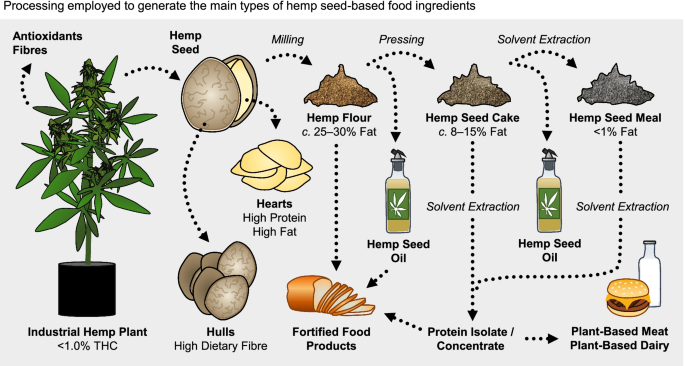
“The lack of effective treatment for neurological disorders has encouraged the search for novel therapeutic strategies. Remarkably, neuroinflammation provoked by the activated microglia is emerging as an important therapeutic target for neurological dysfunction in the central nervous system. In the pathological context, the hyperactivation of microglia leads to neuroinflammation through the release of neurotoxic molecules, such as reactive oxygen species, proteinases, proinflammatory cytokines and chemokines.
Cannabidiol (CBD) is a major pharmacologically active phytocannabinoids derived from Cannabis sativa L. CBD has promising therapeutic effects based on mounting clinical and preclinical studies of neurological disorders, such as epilepsy, multiple sclerosis, ischemic brain injuries, neuropathic pain, schizophrenia and Alzheimer’s disease.
A number of preclinical studies suggested that CBD exhibited potent inhibitory effects of neurotoxic molecules and inflammatory modulators, highlighting its remarkable therapeutic potential for the treatment of numerous neurological disorders. However, the molecular mechanisms of action underpinning CBD’s effects on neuroinflammation appear to be complex and are poorly understood.
This review summarises the anti-neuroinflammatory activities of CBD against various neurological disorders with a particular focus on their main molecular mechanisms of action, which were related to the downregulation of NADPH oxidase-mediated ROS, TLR4-NFκB and IFN-β-JAK-STAT pathways. We also illustrate the pharmacological action of CBD’s derivatives focusing on their anti-neuroinflammatory and neuroprotective effects for neurological disorders. We included the studies that demonstrated synergistic enhanced anti-neuroinflammatory activity using CBD and other biomolecules.
The studies that are summarised in the review shed light on the development of CBD, including its derivatives and combination preparations as novel therapeutic options for the prevention and/or treatment of neurological disorders where neuroinflammation plays an important role in the pathological components.”
https://pubmed.ncbi.nlm.nih.gov/35956911/
“Cannabinoids are a group of terpenophenolic compounds derived from the Cannabis sativa L. plant. The preclinical studies summarised in this review supported the therapeutic use of CBD in treating neurological disorders from its action in addressing microglia-mediated neuroinflammation. The findings of this review shed light on the development of CBD and relevant compounds as novel and more advantageous therapeutics to prevent or treat neurological disorders by targeting microglia-mediated neuroinflammation.”
https://www.mdpi.com/1420-3049/27/15/4961/htm







